What Wine Goes With Korean Beef
Korean drinking culture
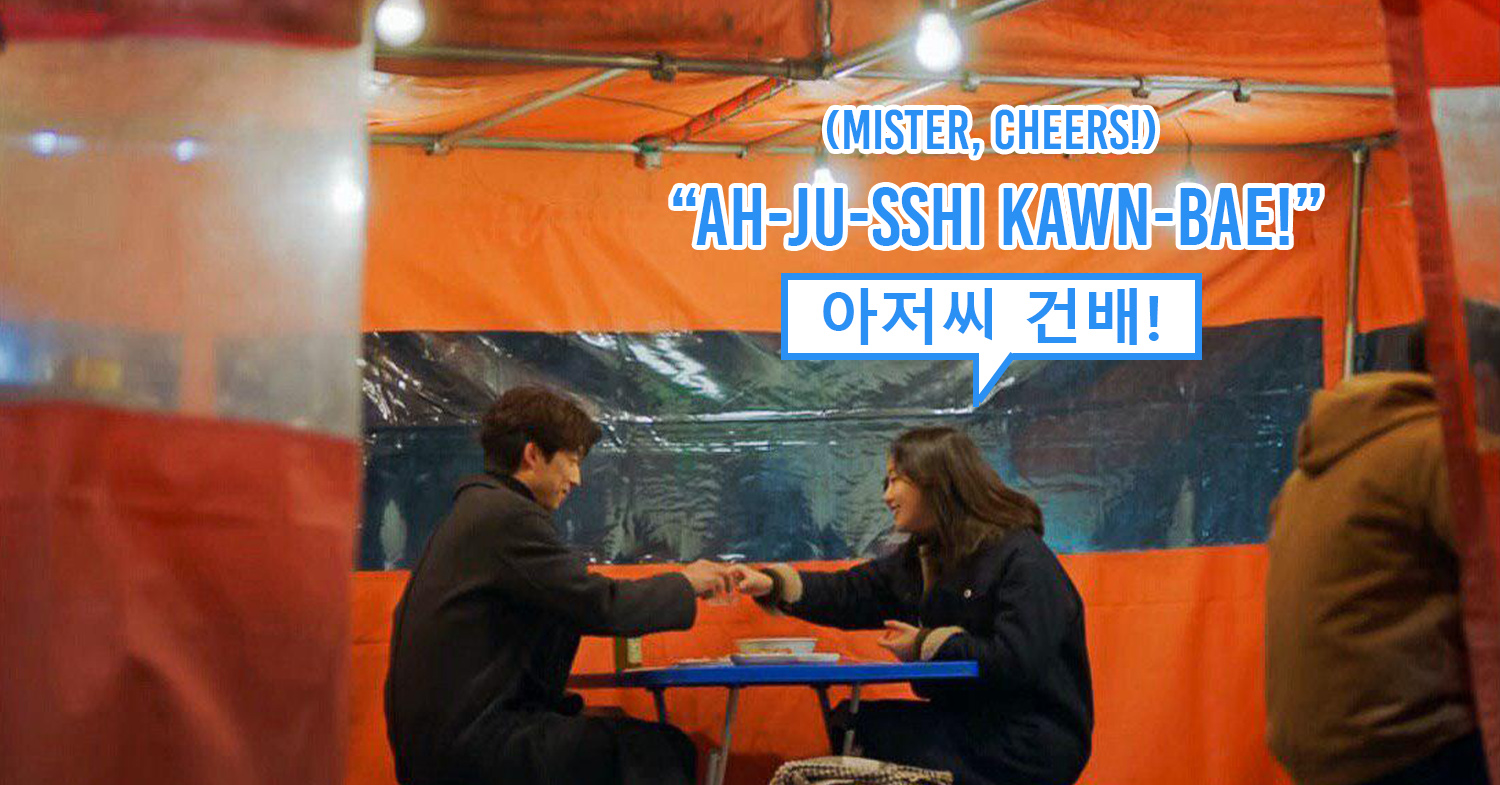 Image adapted from: tvN/Netflix
Image adapted from: tvN/Netflix
Connoisseurs of Korean dramas and movies will be familiar with that huge red tent, where the characters frequent to drink soju for everything from a breakup to a celebration. Known as pojangmacha , these tents are permanent fixtures where locals go for the second round of drinks, also known as i-cha .
While tourists may want to try the pojangmacha experience for themselves, there are unspoken Korean drinking rules that you should take note of, just so you don't get disapproving glances from the ahjussi sitting at the next table. From pouring and receiving drinks with both hands to not refilling your own empty glass, here are some etiquette rules you should know before you decide to shout " keonbae " and down a shot.
We've also included a list of drinks and food you should order so that you can thoroughly enjoy your time at these tents as locals do.
Drinking etiquette
Korea, like many Asian countries, value manners and respect to the elders. And this spills through to their everyday life and yes, even to the way they behave when they are out drinking.
1. Senior should do the honour of pouring the first glass
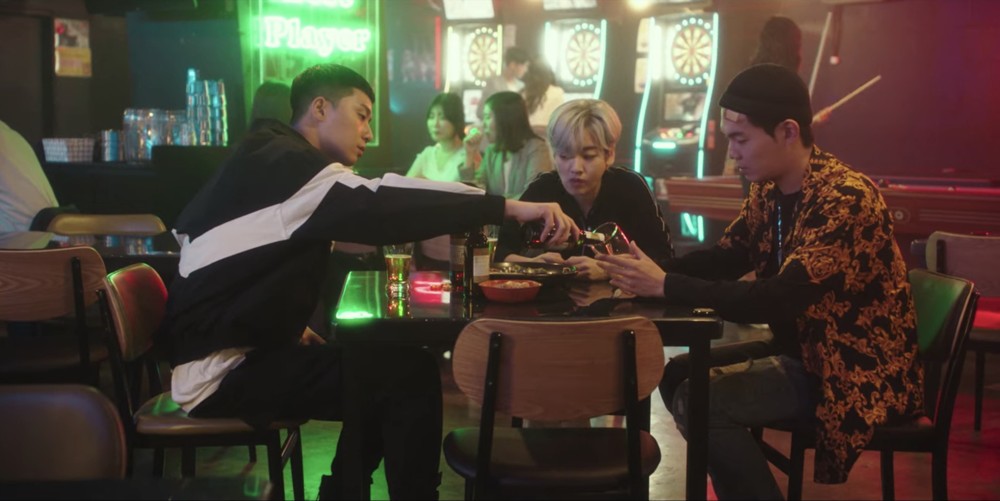
Image adapted from: JTBC/Netflix
Seniority is respected in Korea and this does not only apply to age, but also to the hierarchy within a company. When you're out with your friends or colleagues, the most senior person in terms of age or position should be the one pouring the first glass of drink.
If you're out spending the night with co-workers and your supervisor happens to be younger than you, he or she should do the honour of pouring out the first glass for everyone.
Keep in mind that afterwards, the youngest of the group will have to take over and refill the empty glasses.
2. Pour drinks with both hands
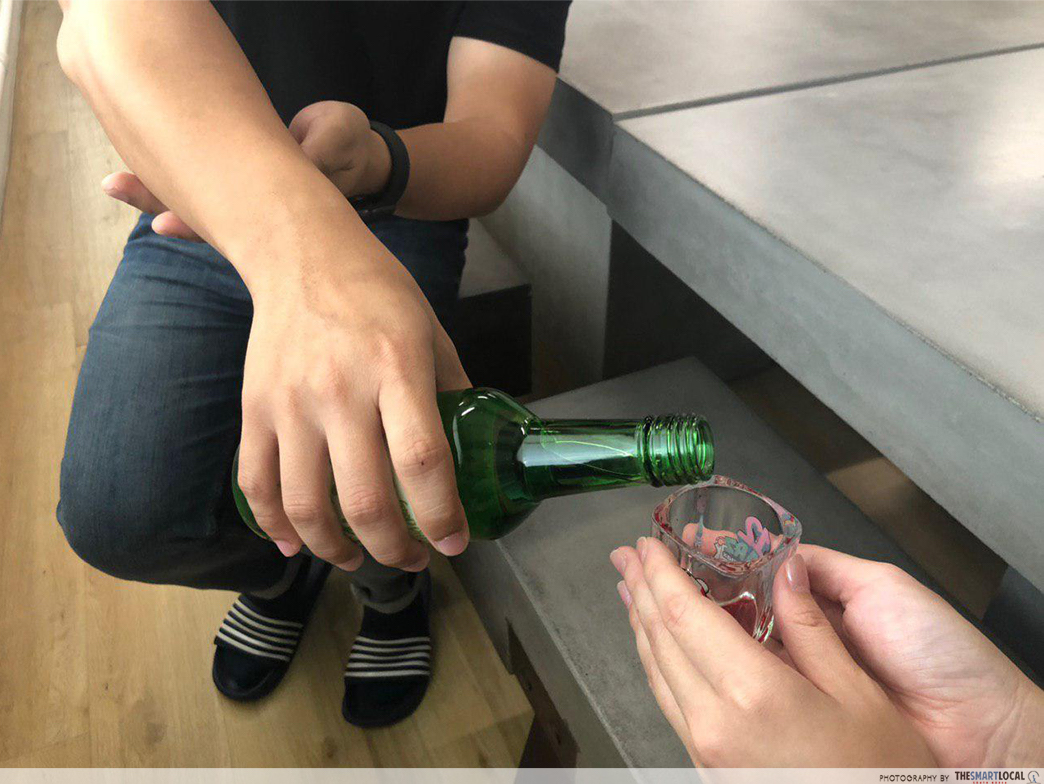
As a show of respect, Koreans generally use one hand to hold the bottle and place the other on their elbow or chest when pouring drinks. If you do find that the bottle is too big to be held with one hand, you can just use both hands.
3. Receive the drinks with two hands
It's only polite to reciprocate what you've received, be it amongst your friends or co-workers. When receiving drinks from someone older, hold your cup with both hands. However, if you're the most senior person in the group, you can raise your glass with just one hand.
But Korean drinking rules become less strict when you're out drinking with close friends, and it's perfectly fine to use one hand when pouring or receiving drinks.
Not sure if you and your drinking partner are close enough to bend the rules? Just use both hands – it's better to be safe than sorry.
4. Clink your glass below your senior

Image credit: @anjurestaurant
When clinking glasses, position the rim of your glass a little lower than those of a higher status. Doing otherwise is impolite.
This rule can get confusing when you're out drinking in a large group, but don't worry. Just be sure to make it obvious that your cup is lower than most of the seniors, and you're good to go.
As with the previous rule, this rule doesn't apply to groups of close friends. And as the night progresses and people get drunker, these rules will get less strict.
5. Turn away and cover your mouth when drinking
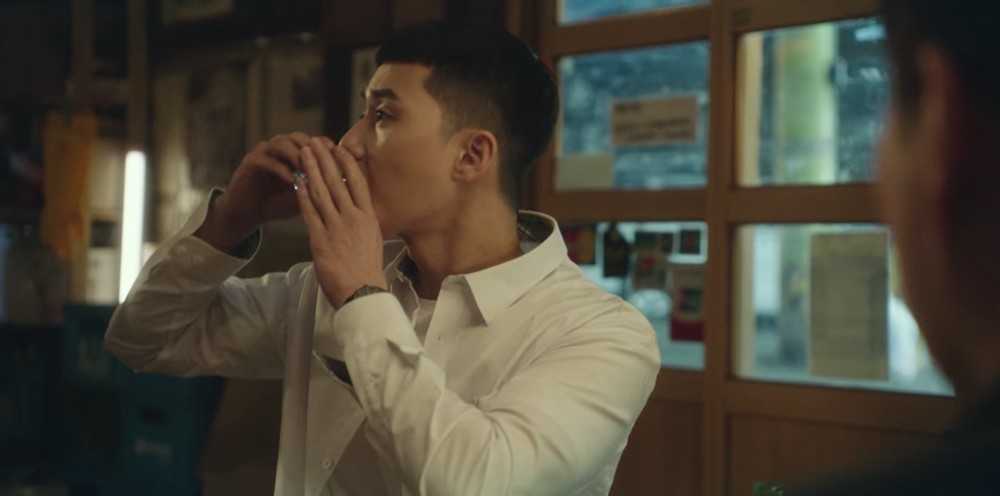
Image adapted from: JTBC/Netflix
In Korea, it's a practice to not face someone older straight on when you're drinking. You'll notice that people turn their heads either to the right or away from the table and have their left hands over their mouths as they drink.
Again, you can drop these formalities and just down a shot if you're out with your friends.
6. Down the first glass in one go
Drinking in Korea is seen as a social activity where people bond over drinks. It's a custom to down your first glass, be it a shot of soju or a glass of beer. But after that first drink, it's ok to pace yourself after by taking small sips.
7. Fill everyone's cup but your own
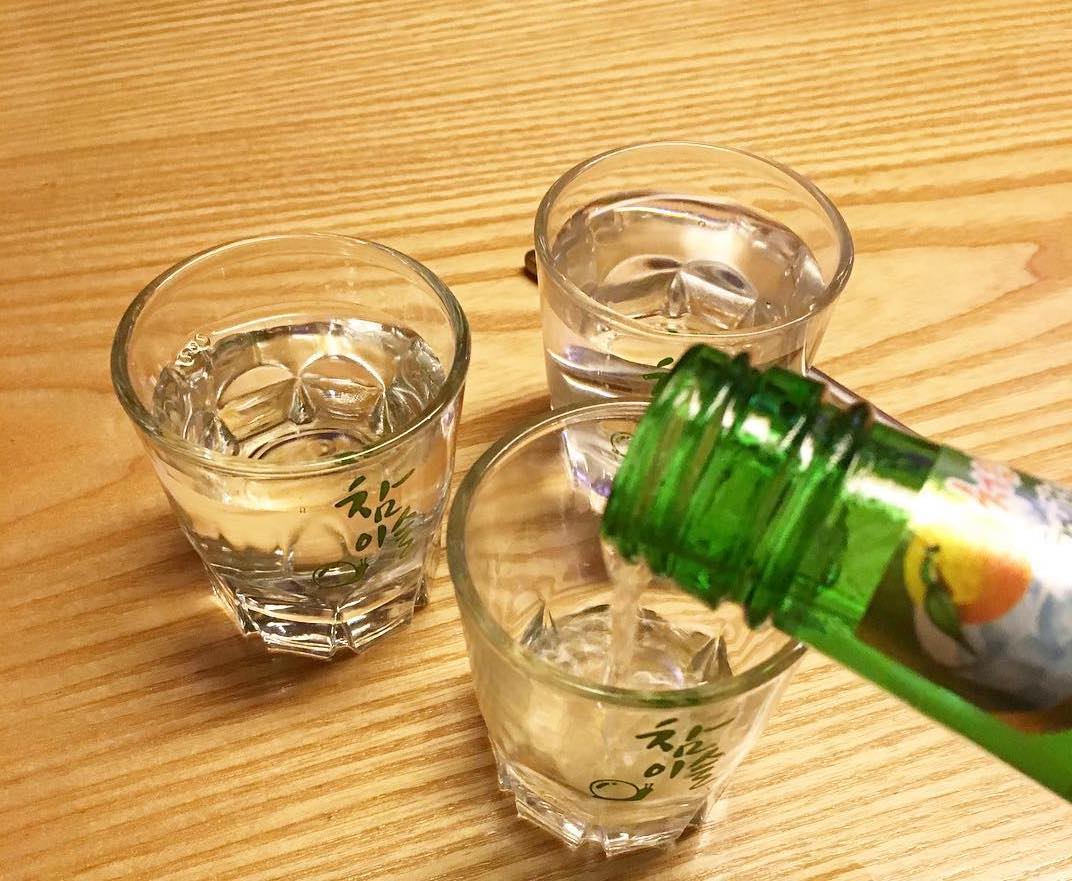
Image adapted from: @thatgirlwhoflirtswithfood
As you can already tell, Koreans really value manners and respect for seniors. When you come across empty glasses on the table, promptly refill them starting from the most senior person.
Do not refill your own glass as that's seen as impolite. Instead, let others return the favour and pour one out for you.
Tip: At some point, heavier drinkers might start refilling their own cups. When that happens, quickly grab the bottle from the person and proceed to do the honour of pouring. This is the norm and you don't have to worry that it might come off as you being rude.
8. Don't fill the glass if it's still partially filled
It may appear to be considerate to actively fill up people's glasses, but you should only do so when they are entirely empty. According to Korean drinking rules, keeping their glasses half-filled is a way to say they want to take it slow. So as a rule of thumb, only offer to refill when there's an empty cup in sight.
9. Know your limits and stop
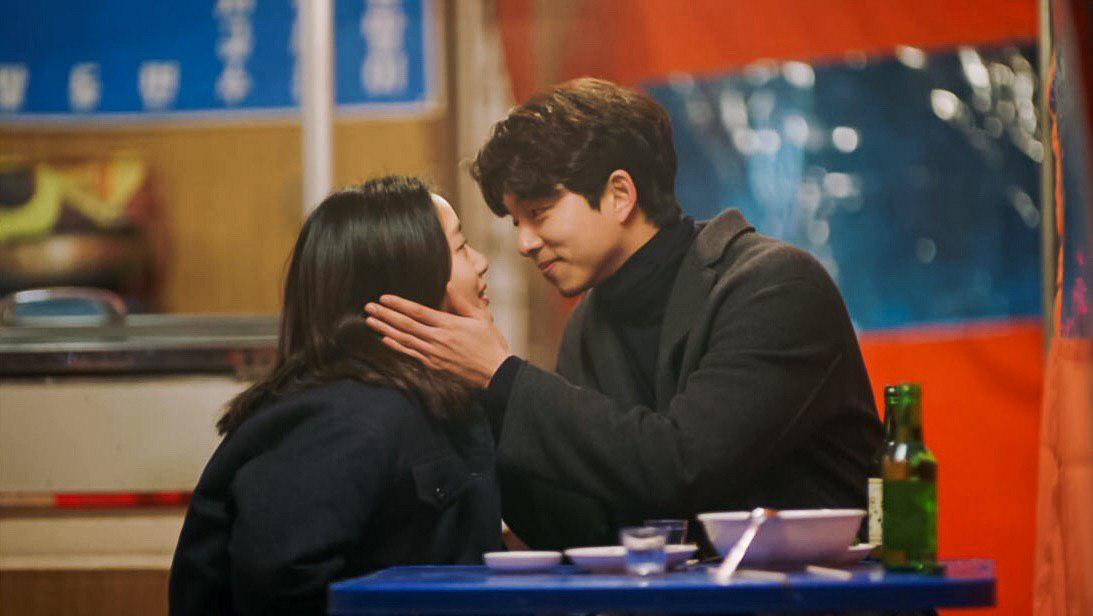
Image adapted from: tvN/Netflix
Keep in mind that drinking is a social activity to get to know your colleagues or friends better. While it's considered normal to let loose around your friends, there's a certain line that you should never cross when drinking with your colleagues. It's important to know your limits and drink responsibly – you don't want to hide your face in embarrassment when you return to work.
If you do get tipsy pretty easily, remember to keep your cup partially filled – it's a sign you don't want a refill.
10. Polite ways to reject drinks
Although you have every right to say no, people may get pushy when it comes to drinks. And since Koreans drink to better relations, an outright refusal can be seen as you not wanting to be part of it. Here are some ways to politely decline drinks to avoid any misunderstanding:
- I'm taking medication.
- I'm the designated driver tonight.
- I can't drink because of my religion.
- I have alcohol allergies.
11. Love shots are non-discriminatory
If the lyrics "It's time for the love shot" from EXO's Love Shot is playing in your head, we don't blame you. Love shots aren't just a thing between couples or crushes in Korean drinking culture. You might be asked to do a love shot with either a friend or colleague too. All you've to do is simply hold up your cup and hook your arms around each other before taking a shot.
Drinks to order
Now that you're familiar with all the Korean drinking formalities, it's time to get down to what you should order for your next night out.
1. Soju 소주
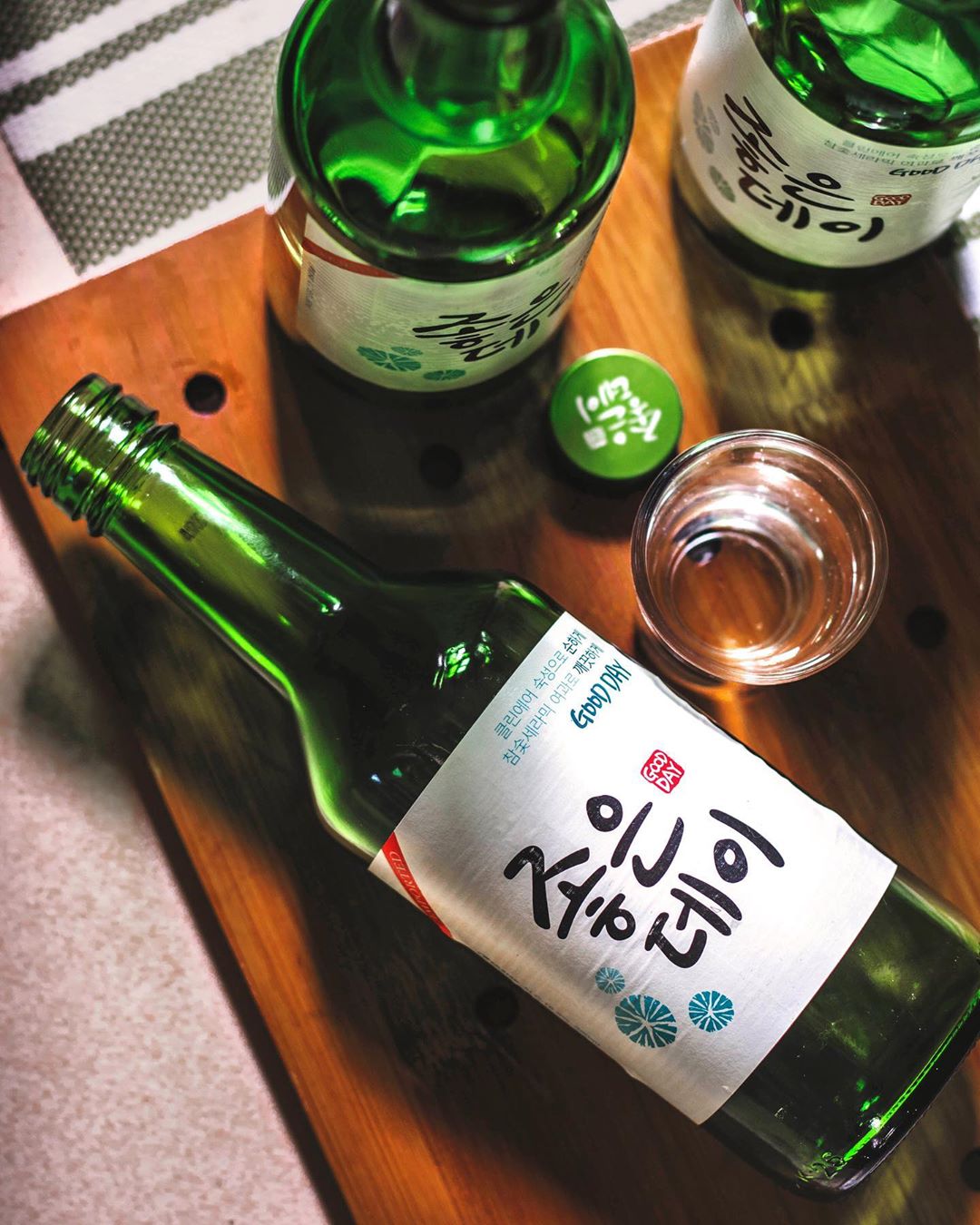
Image credit: @restaurantessam
In Korean (Hangeul): 소주
How to pronounce: so-ju
If the representative drink for Japan is sake and wine for France, the honour definitely goes to soju for South Korea.
Soju is a fermented rice wine and in Korea, it comes in an iconic green glass bottle. It's sweeter than gin and vodka, but still packs a punch.
There's a ritual that Koreans do prior to drinking soju – swirl and shake the bottle in a circular motion before opening it. This creates what they call a "tornado" inside the bottle. Some Koreans believe it helps soften the taste while others claim it helps distribute the sediment that has settled at the bottom.
2. Makgeolli 막걸리
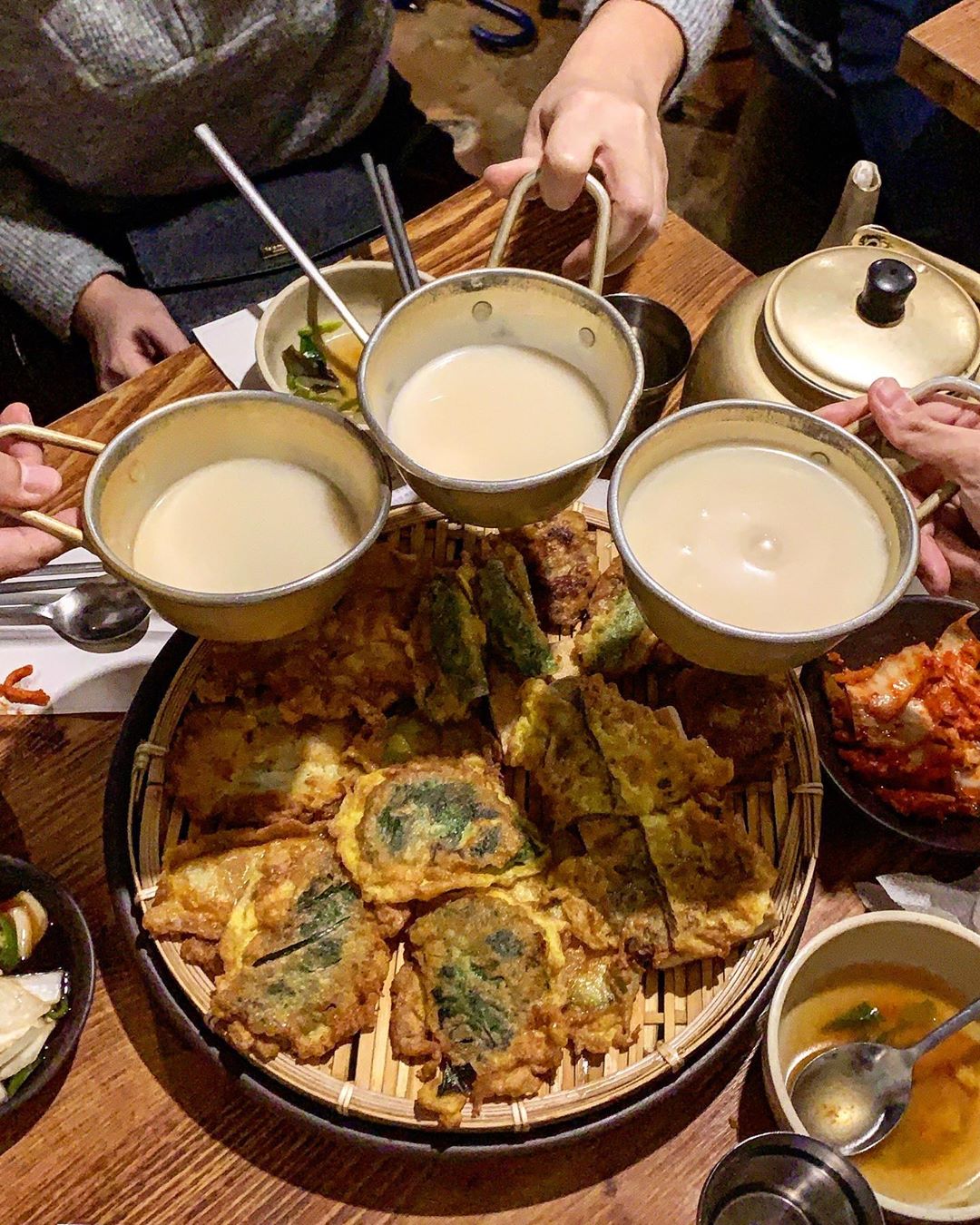
Image adapted from: @gajayo
In Korean (Hangeul): 막걸리
How to pronounce: mak-gaw-li
Makgeolli , on the other hand, is a milky Korean wine made from fermented rice and wheat. On top of a smooth and silky texture, the fermentation process also brings out a hint of sweetness. Some renditions add additional flavours such as cream cheese, banana, chestnut, citron, and peach.
Koreans say that makgeolli is good for health because it contains a lot of nutrition and probiotics – but only in moderation, of course.
3. Beer 맥주 (maekju)
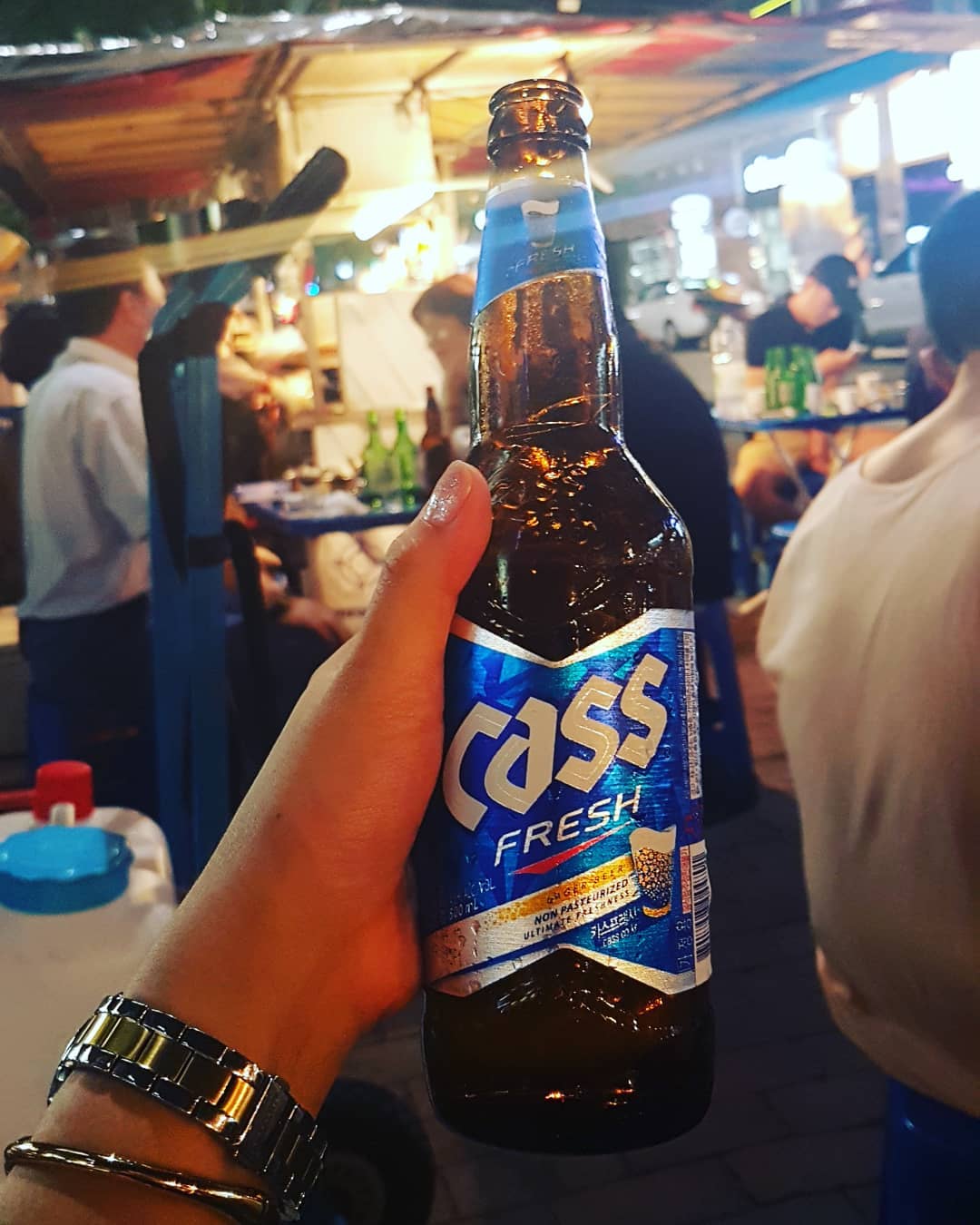
Image credit: @junoredfeather
In Korean (Hangeul): 맥주
How to pronounce: make-ju
If you only drink beer, you definitely have to try some local maekju from brands like Cass, Hite, OB, and Max. Korean beer is known to be lighter on the palate and it's perfect to go with greasy dishes such as barbequed pork belly and fried chicken.
4. Cheongju 청주

Image credit: NAWADUNIA
In Korean (Hangeul) : 청주
How to pronounce: chawng-ju
They may both come in green glass bottles, but don't mistake cheongju for soju . Cheongju literally translates to "clear wine" or "clear liquor", and its taste is similar to that of Japanese sake.
5. Bonus: Bogdanju 폭탄주
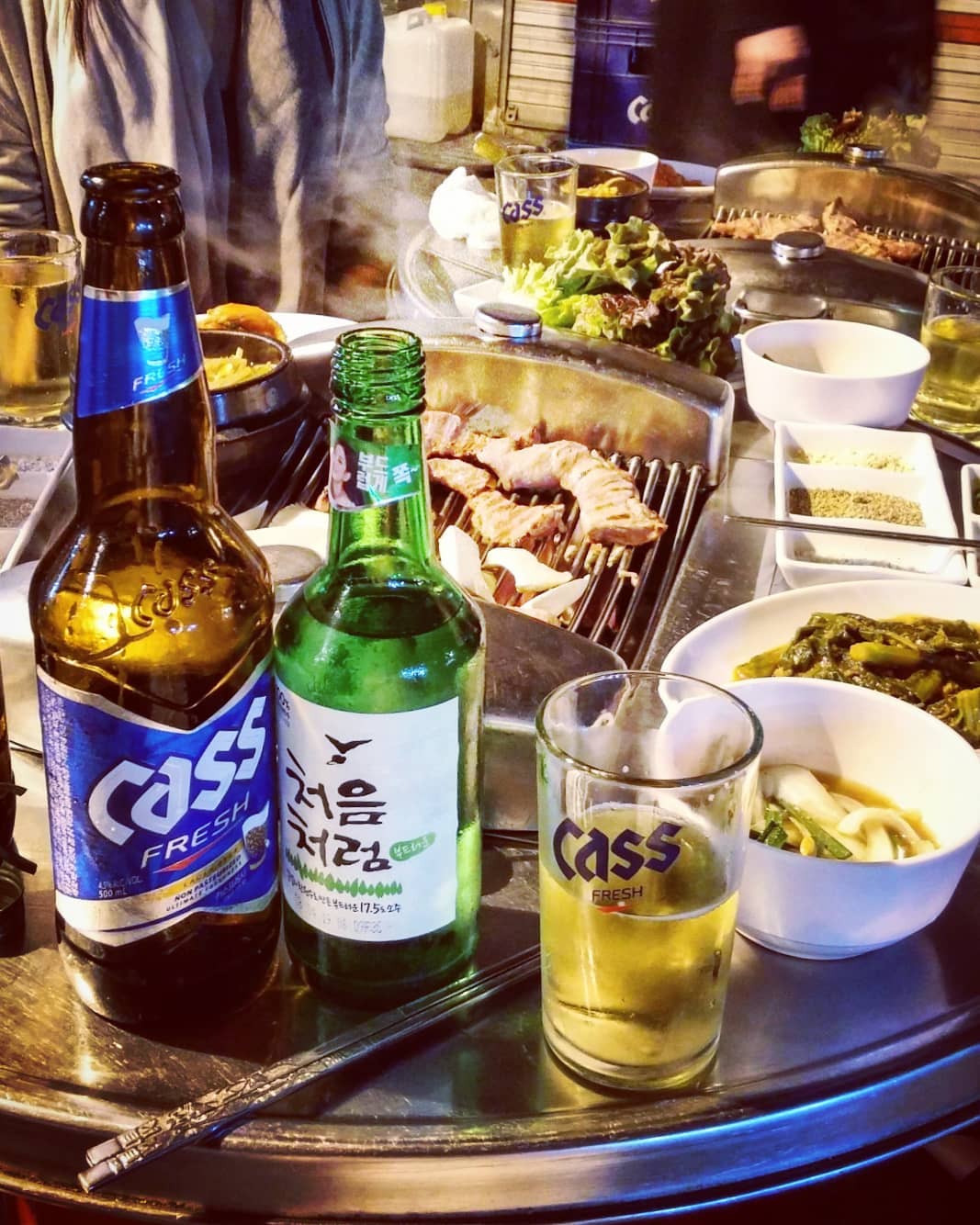
Image credit: @drinkingwithwayne
In Korean (Hangeul):폭탄주
How to pronounce: pok-tan-ju
Literally translating to "bomb drink", it's a mixture of two types of alcoholic drinks. In English, it's called a "soju bomb". One of the most famous bogdanju is none other than somaek ( 소맥), made from a combination of soju and maekju .
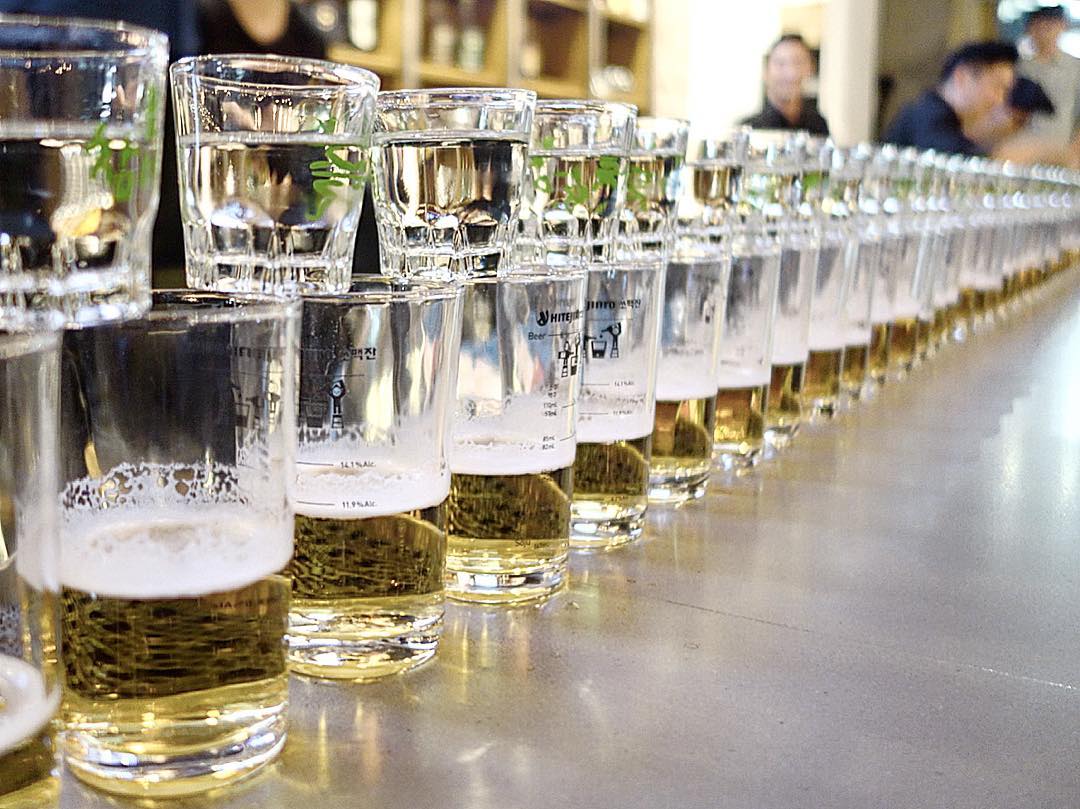
Image credit: @hello.jenni
Line the soju shot glasses above a line of beer mugs – Koreans call it the "Seoul Train" and they knock it down like dominoes. Remember to only fill the beer mugs till half full to get the right ratio for a perfect somaek .
Food to order
Now that you've mastered Korean drinking rules, it's time for food. Much like how we usually order a cheese platter to go with wine, spam fries to go with beer, and dark chocolate to go with whiskey, Koreans have what they call anju ( 안주) – a collective term for food to go with alcohol, both main and side dishes alike.
Apart from the typical tteokbokki and gimbap , here are some anju dishes you should try for an authentic pojangmacha experience.
1. Chicken gizzard 닭똥집 (dalgttongjip)
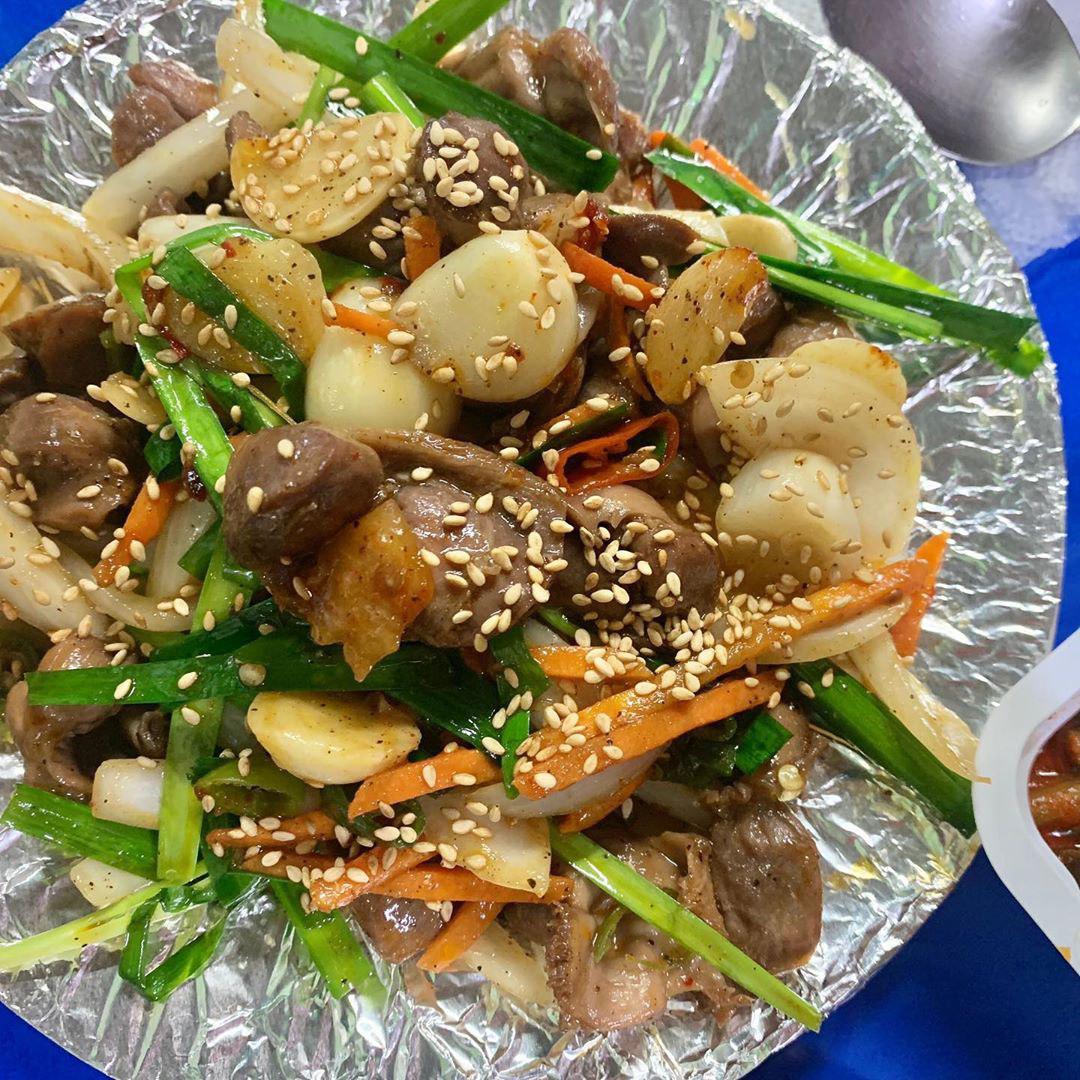
Image credit: @hygge_12
In Korean (Hangeul): 닭똥집
How to pronounce: dalk-tong-jib
One of the must-order anju for many locals, dalgttongjip is a stir-fried chicken gizzard dish that comes with a generous serving of whole garlic cloves, shredded carrots and spring onion.
2. Stir-fried cartilage 오돌뼈 (odolppyeol)
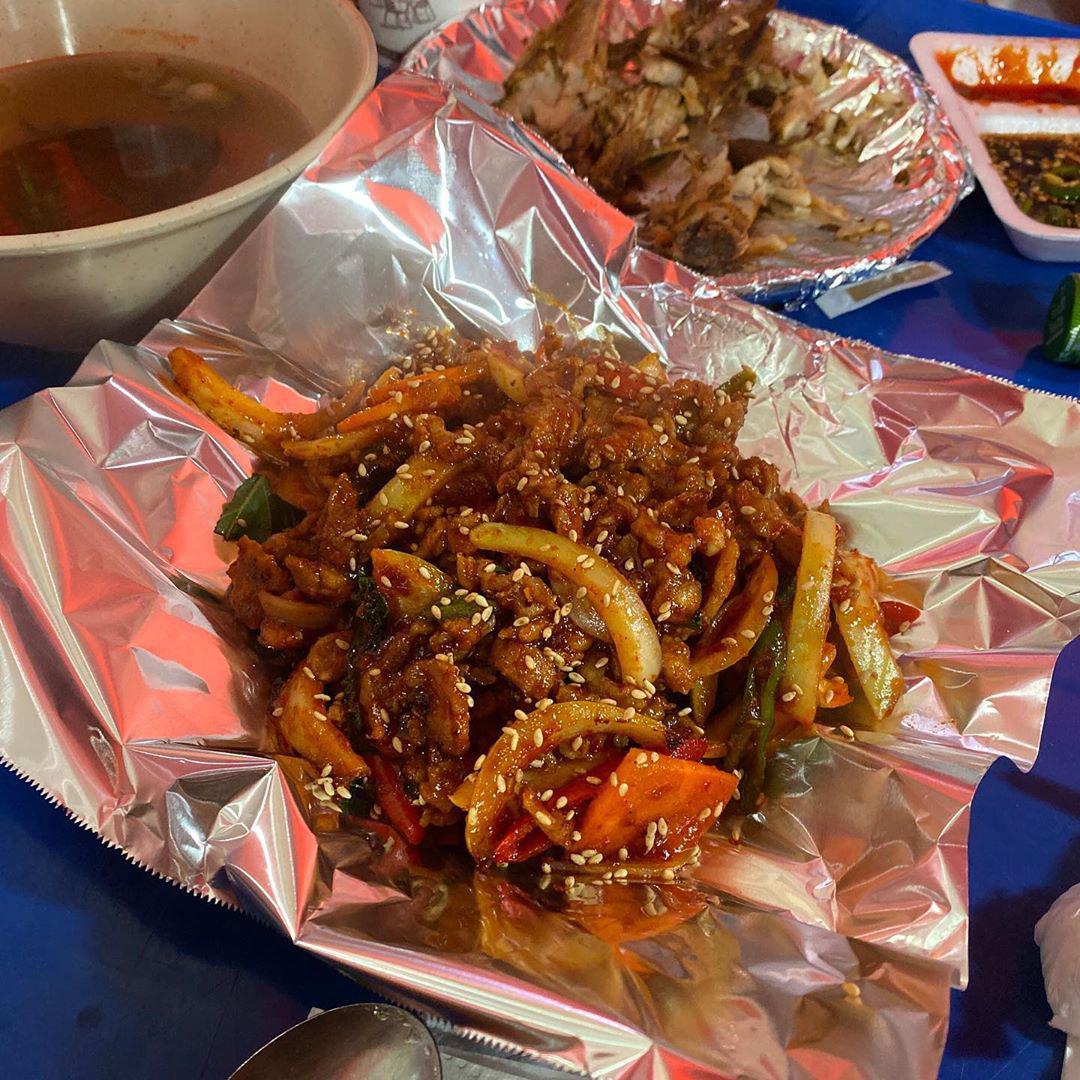
Image credit: @seong_124
In Korean (Hangeul): 오돌뼈
How to pronounce: o-dol-pyol
The bone-like cartilage is surrounded by soft meat, which makes it great for people who feel that chips are too dry and gizzards are too chewy as a bar snack. Have it with soju as the spicy sauce of odolppyeol balances out the bitterness of the alcohol.
3. Grilled squid 오징어 구이 (ojingeo gui)
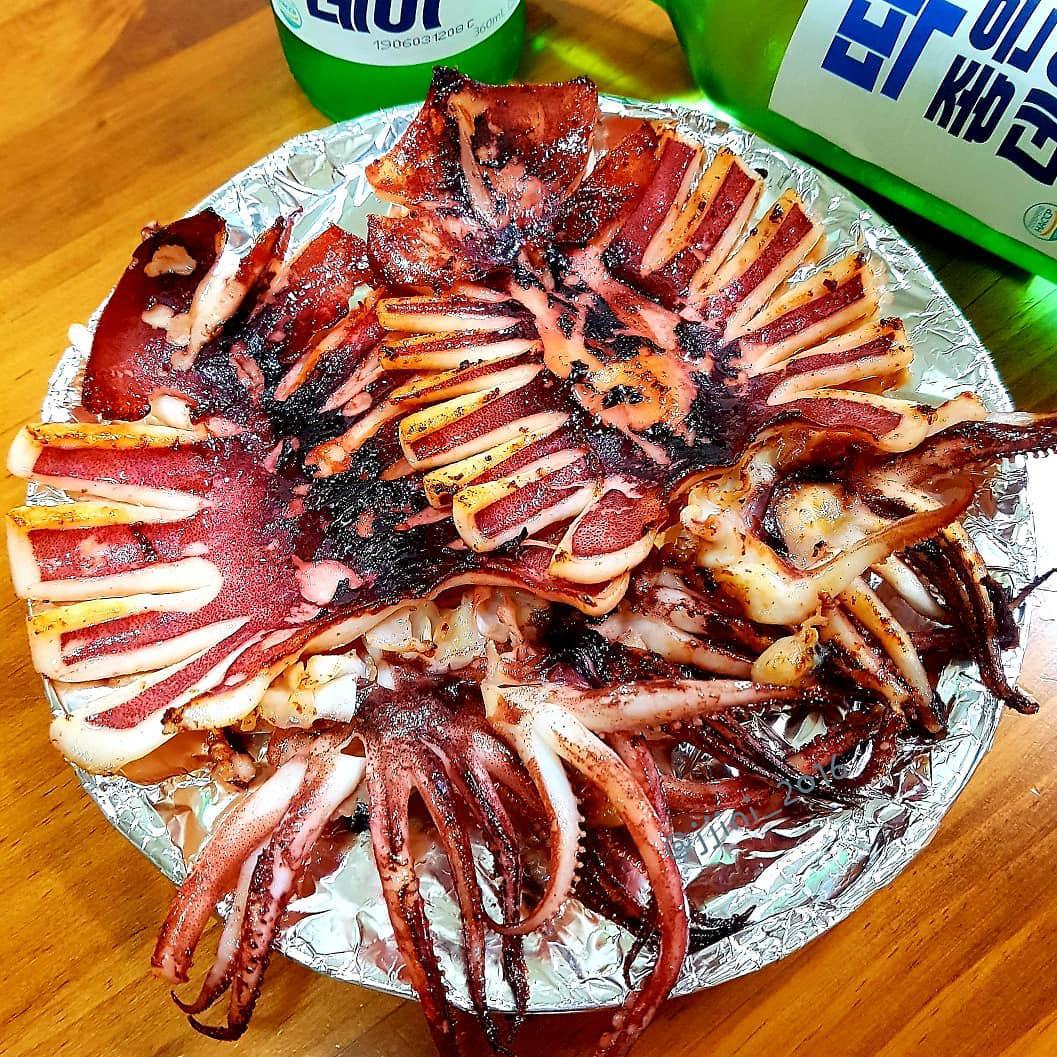
Image credit: @jjini_2016
In Korean (Hangeul): 오징어 구이
How to pronounce: o-jing-aw gu-yi
Squid is lightly seasoned with salt and pepper to bring out its natural sweetness. The chewiness also makes it a perfect snack to munch on as you catch up with your friends over a few drinks.
4. Odeng 오뎅 (odeng)
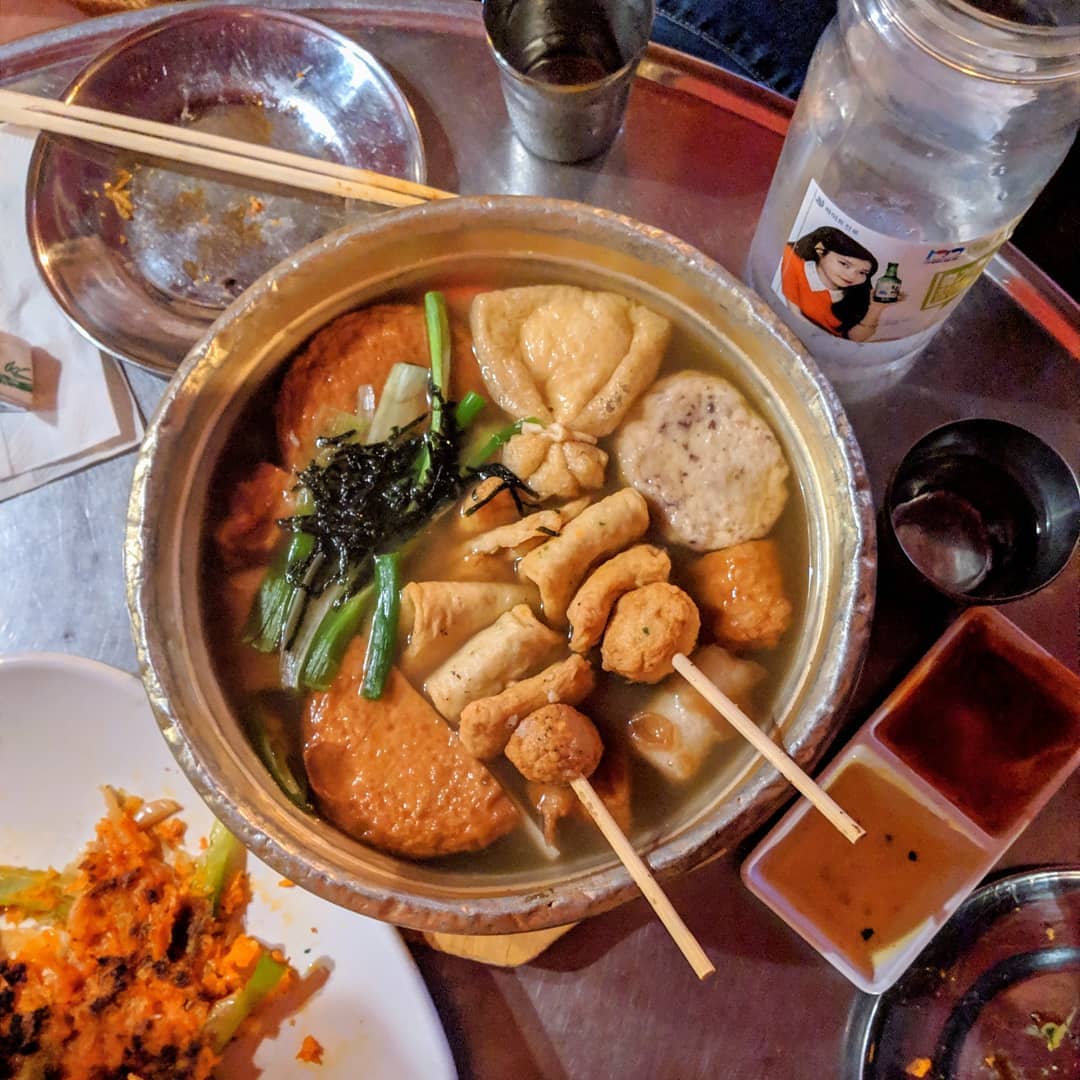
Image credit: @mrmrtravels
In Korean (Hangeul): 오뎅
How to pronounce: o -deng
It's always a good idea to fill your empty stomach with something warm before you drink, and you can never go wrong with a comforting bowl of odeng – a peppery broth filled with fish cakes of different shapes and sizes.
5. Different kinds of pancake 전 (jeon)
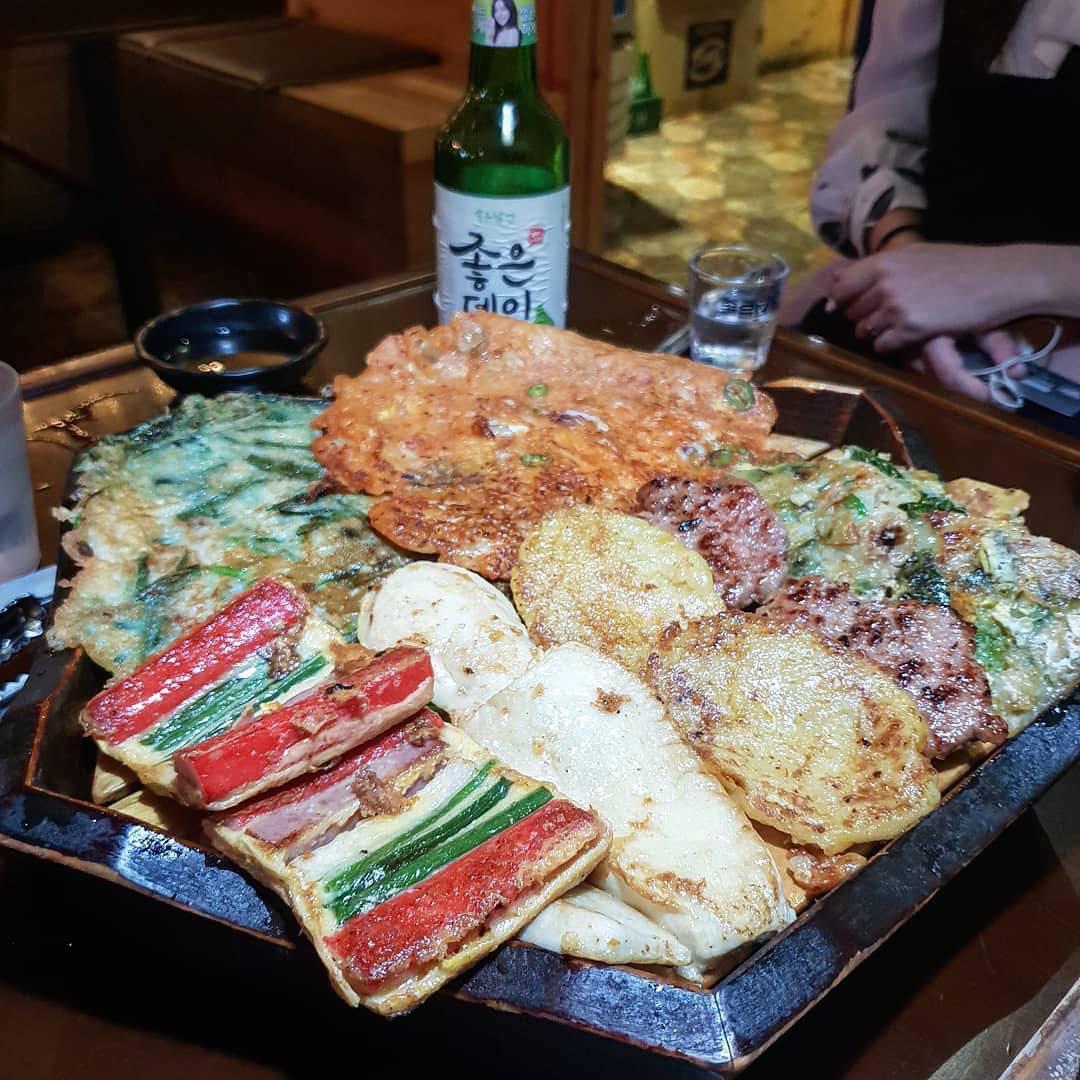
Image credit: @kntosydney
In Korean: 전
How to pronounce: jawn
Pancake is another anju that goes well with drinks. Filling enough to be a meal on its own, choose from a wide selection of jeon available.
| English | Korean (Hangeul + Romanization) | Pronunciation |
| Kimchi pancake Seafood pancake Meat pancake Colourful pancake (usual ingredients include: beef/pork/spam, mushroom, green onion, pepper) | 김치전 (gimchijeon) 해물전 (haemuljeon) 고기전 (gogijeon) 산적 꼬치 (sanjeok kkochi) | kim-chi-jawn hae-mul-jawn go-gi-jawn san-jawk ko-chi |
6. Blood sausage 순대 (sundae)
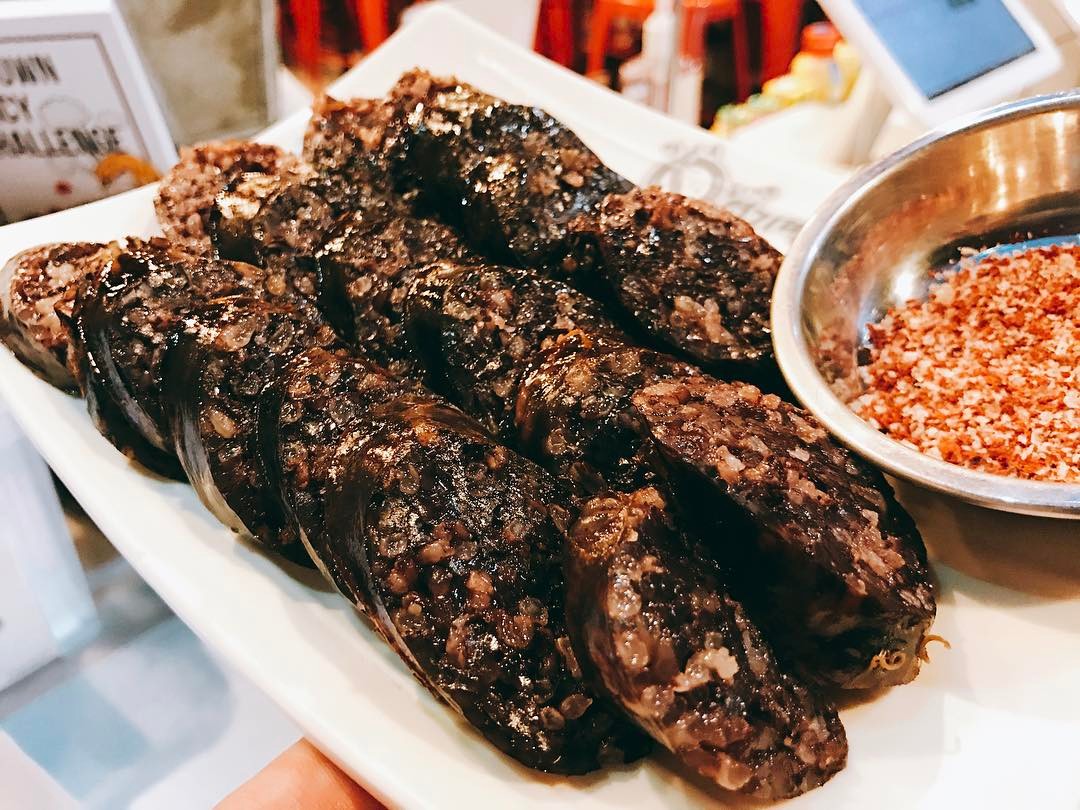
Image credit: @yupdduk_la
In Korean: 순대
How to pronouce: soon-deh
Nope, this has nothing to do with McDonald's sundaes. Sundae is actually a Korean sausage made with pig intestine and stuffed with cellophane noodles, barley, and pork blood. Looks aside, it's actually very palatable because of the added seasonings like ground shrimps and sesame seeds.
7. Raw octopus 산낙지 (sannakji)
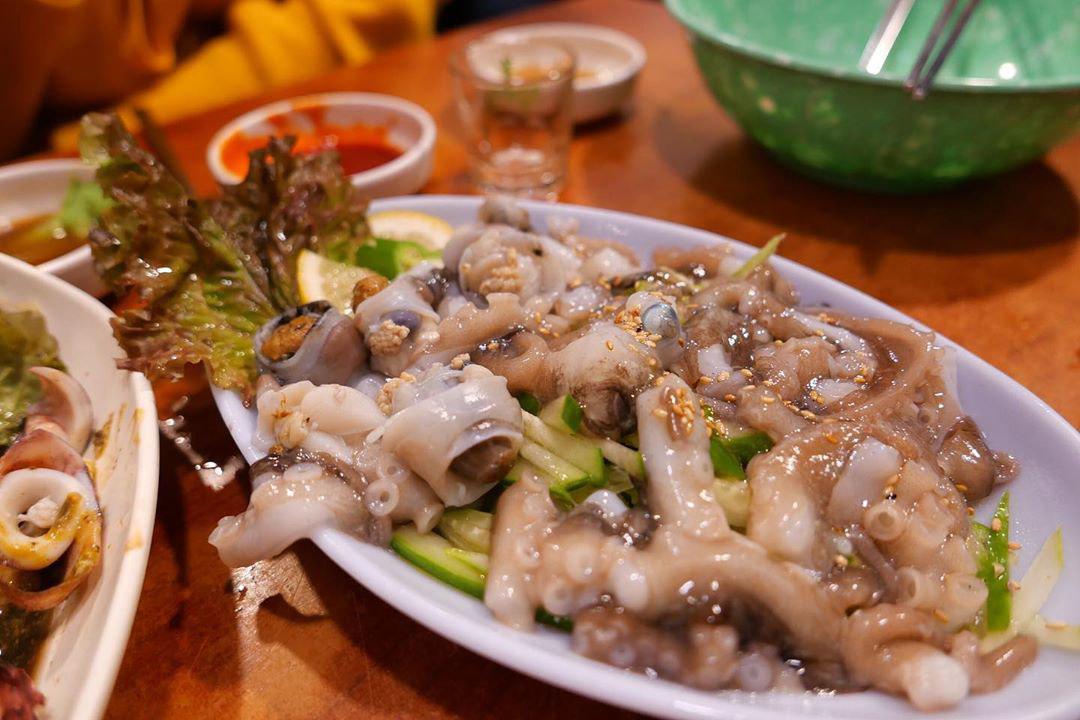
Image credit: @sonya.hyun_s
In Korean (Hangeul): 산낙지
How to pronounce: san-nak-ji
You don't have to make a trip down to Noryangjin Fish Market to try this dish as it's served at some pojangmacha. Plus, if you can't muster up the courage to put a wriggling piece of octopus into your mouth, it might not be a bad idea to have some drinks before doing so.
8. Spam
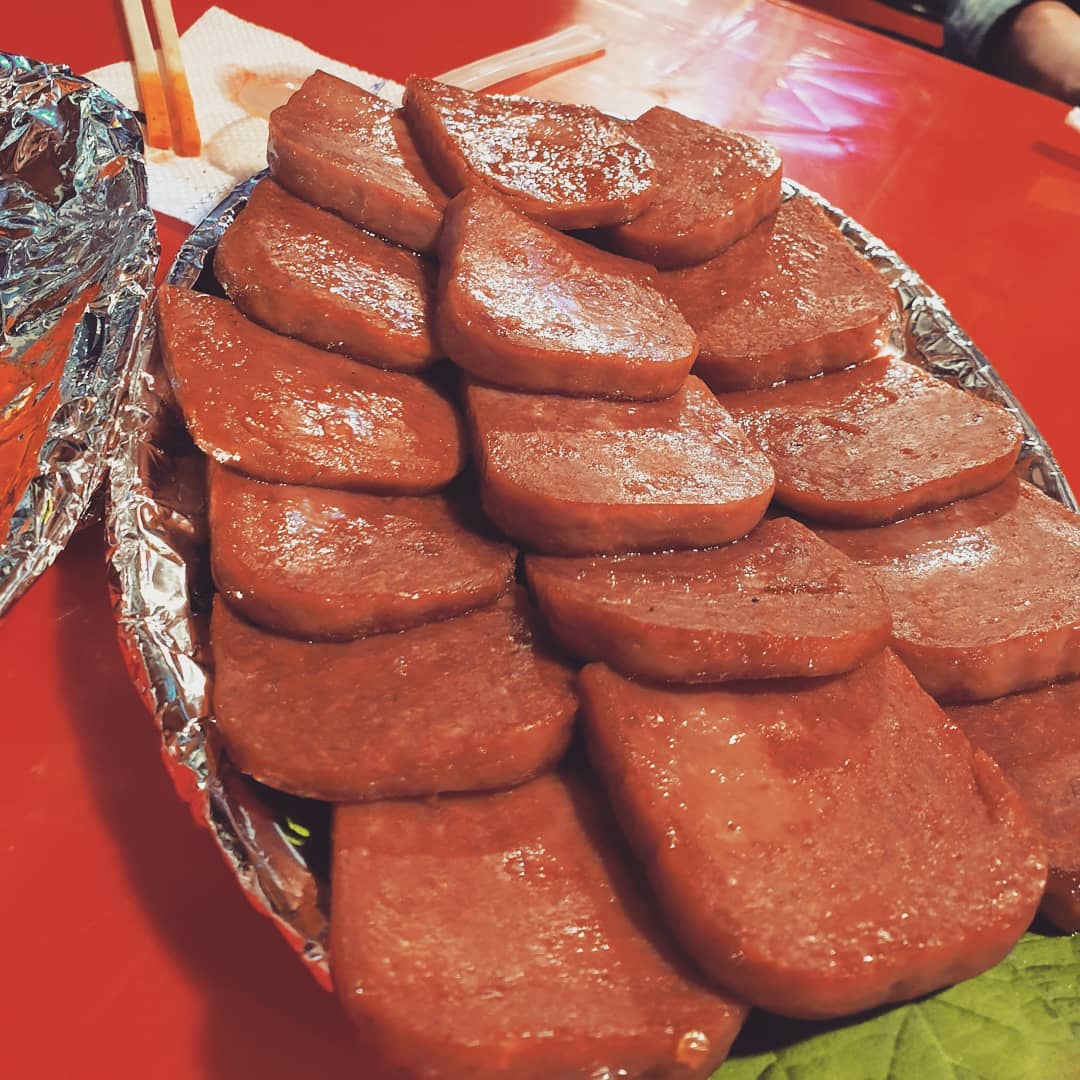
Image credit: @theseoulite
Unlike the spam fries we get in a western bar, the spam here is sliced into bigger cuts before getting a perfect sear. Be careful though, as this dish is highly addictive.
9. Boiled cockles
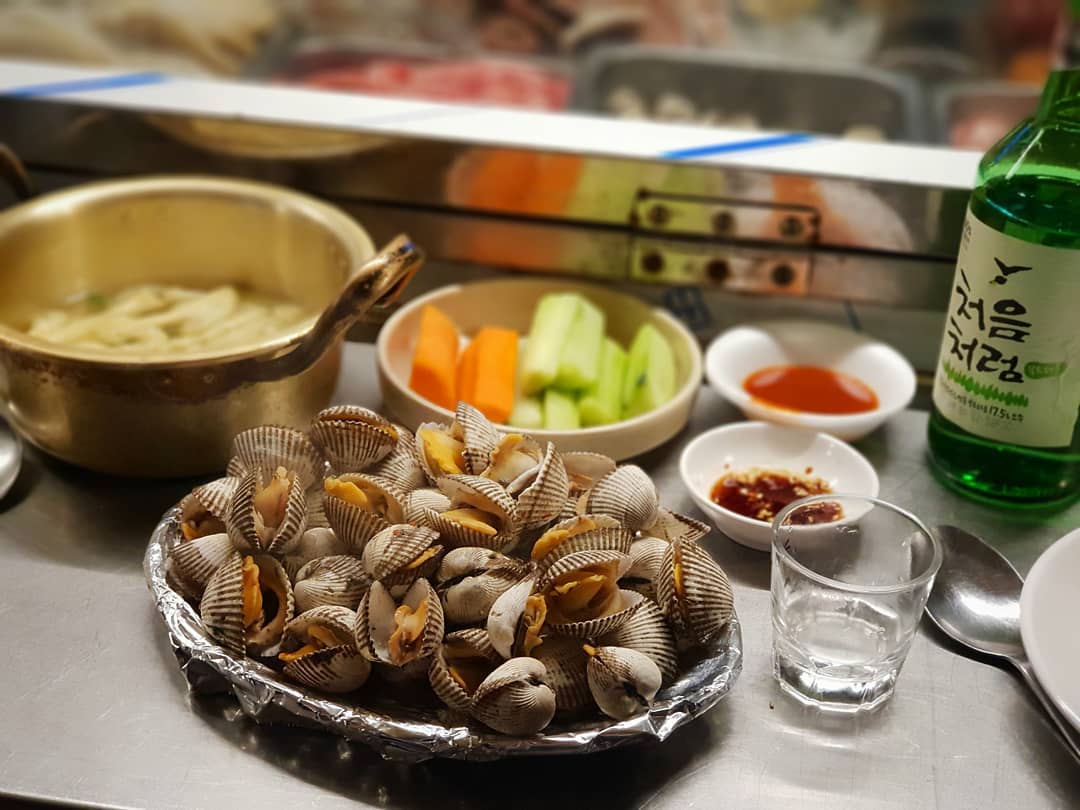
Image credit: @sujung_leeeee
Pojangmacha vendors offer plenty of fresh seafood options on their menus, and the boiled cockles are totally worth a try. It's usually fresh and retains much of its sweetness even after being blanched. Just make sure your Hepatitis B vaccination is up to date before tucking in.
Final note: Most pojangmacha do not accept card payments, so bring enough cash.
Korean drinking rules for a great night out
Stepping foot into pojangmacha should not scare you anymore. With this comprehensive Korean drinking guide, you are now well-equipped with the knowledge of what you should order and how you should act. So here's us saying cheers to having a good time in one of these little red tents!
Here are other articles you can check out before heading to Seoul:
- 9 Korean ski resorts less than 3 hours from Seoul
- 10 Authentic Korean fried chicken stalls
- 10 Things to do in Seoul that are not shopping
- 10 Korean street food better than what Netflix's featured
- 16 Korean phrases for travelling and getting around Seoul
Follow The Smart Local South Korea on Facebook, Twitter, Instagram and Telegram for more stories like this.
Source: https://thesmartlocal.com/korea/korean-drinking-culture/
0 Response to "What Wine Goes With Korean Beef"
Post a Comment